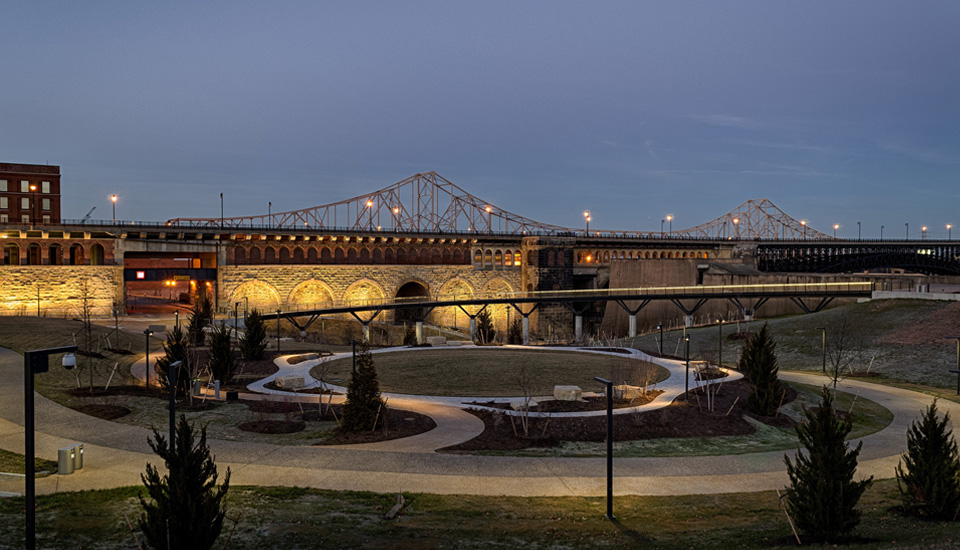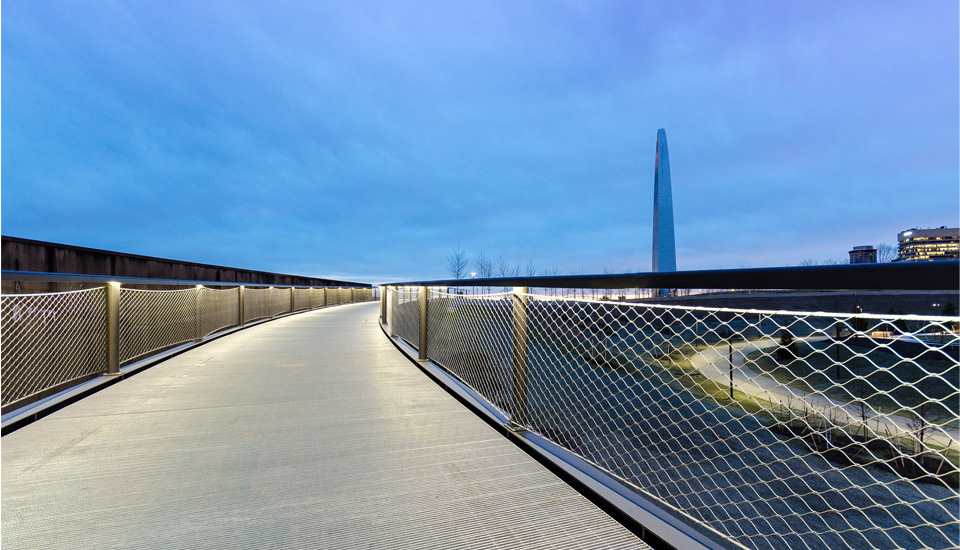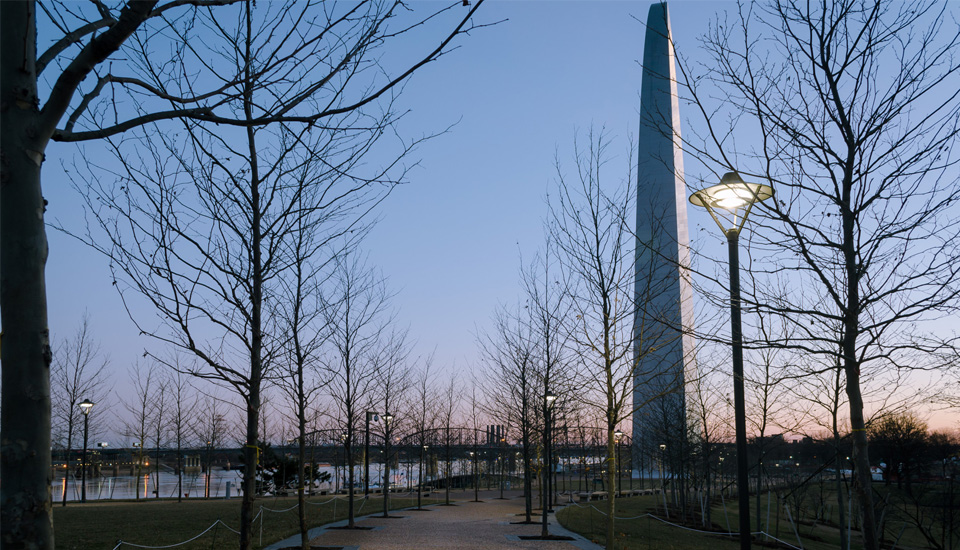ETC Controls Midwest Landmark
Date Posted: 5/29/2019

As the Eiffel Tower and the Empire State Building define their home cities, the Gateway Arch in St. Louis is arguably the Midwest’s most important icon. While the Arch gets all the visual attention, the national park it occupies is equally impressive.
The 91-acre grounds of the Gateway Arch National Park recently underwent an extensive landscape re-design, including the removal of an existing parking garage, the creation of an elevated walkway, and several new walking and biking paths. And as part of this re-design, local company Randy Burkett Lighting
Design created a complete new park lighting system, utilizing
ETC’s Mosaic family of products.
The scope of the design was as large as the park: everythingwas to receive new lighting. This included the historic “allées” (tree-lined paths throughout the park), new paths on the park border, accessible walkways connecting the park to the riverfront, and a new section of park named the
“North Gateway,” which includes an elevated walkway and the historic Eads Bridge’s south embankment abutment.
“The primary goal for the project lighting design was to support the programmatic nature of the pathway system from day through the evening,” says Richard Fisher of RBLD. “A simple, modern form was selected along the border pathways, while a stylized
unit was deployed in a formal arrangement along the historic tree allées.” Other goals included the reduction of glare and uplight (pedestrian-scaled fixtures were cut-off units), and improvement of visual comfort at night for park visitors. Maintaining and enhancing the major views was also a key
consideration.

The control system was designed to support a variety of operational needs – from normal days to special events such as stargazing and a large festival over the Independence Day holiday. The system communicates via a
DALI network using individually-addressed fixtures with dimmable drivers. Fixtures are balanced to create a unified appearance and rhythm of light. Given the size of the park it was also important that the control system also provide fixture monitoring, notifying park management of fixture operation and hours of
operation for long-term maintenance.
The allées and border path lighting utilized pedestrian-scaled poles and fixtures. For the allées, RBLD developed a custom fixture that was derived from a monumental unit designed during the Arch’s construction but never manufactured. Allées and border path fixtures were controlled with a DALI network using the Mosaic
controllers.
The Tech Specs
The lighting controls system for the park utilized a number of different ETC components, but at the head of everything is a
Mosaic Show Controller. The MSC was chosen because it can handle a number of different protocols and is known for its reliability. Two of the main elements under Mosaic’s control are a pair of ETC DMX-enabled relay cabinets for switching the non-dim fixtures across the park – one for each of the north
and south halves. After that, the MSC connects to and controls a DALI network for all pole-based pathway lighting. Due to the park size, cable-run length limitations, and device limitations associated with the DALI protocol, the MSC is connected to a series of distributed control hubs via a fiber optic network.
These hubs, located throughout the park, are then connected to another layer of distribution equipment before connecting to the fixtures.

The Challenges
One of the obvious challenges was park size, and how that impacted protocol requirements like cable length and the number of devices on a loop. Another challenge was that DALI is simply not that common within the US. But Fisher made that choice because he felt that the robustness of the protocol – in terms of wire and
wiring – would be advantages across such a large site.
The last challenge was that the site-distributed control equipment could not be housed in above-ground cabinets. As a national park, the design direction was that the site should appear as natural as possible with as few support elements as possible visible. Oversized hand holes, drainage, NEMA-rated cabinets, and
waterproof connections were specified to try and minimize possible ingress problems.
One final challenge for the install was managing the complexity of working with four separate electrical contractors, each on different times and schedules. “One of the ways we tried to combat this was to specify a lighting integration specialist as part of the control system scope. In this case, Candela Controls
was the selected vendor (working as a sub-contractor to one of the ECs) and they helped bring application knowledge as well as becoming the point person for all things control-related with the electrical contractors,” says Fisher. “They were a huge asset and a key to the success of this project”
St. Louis was the gateway to the West, and ETC is now the gateway to a bright new future for its park.